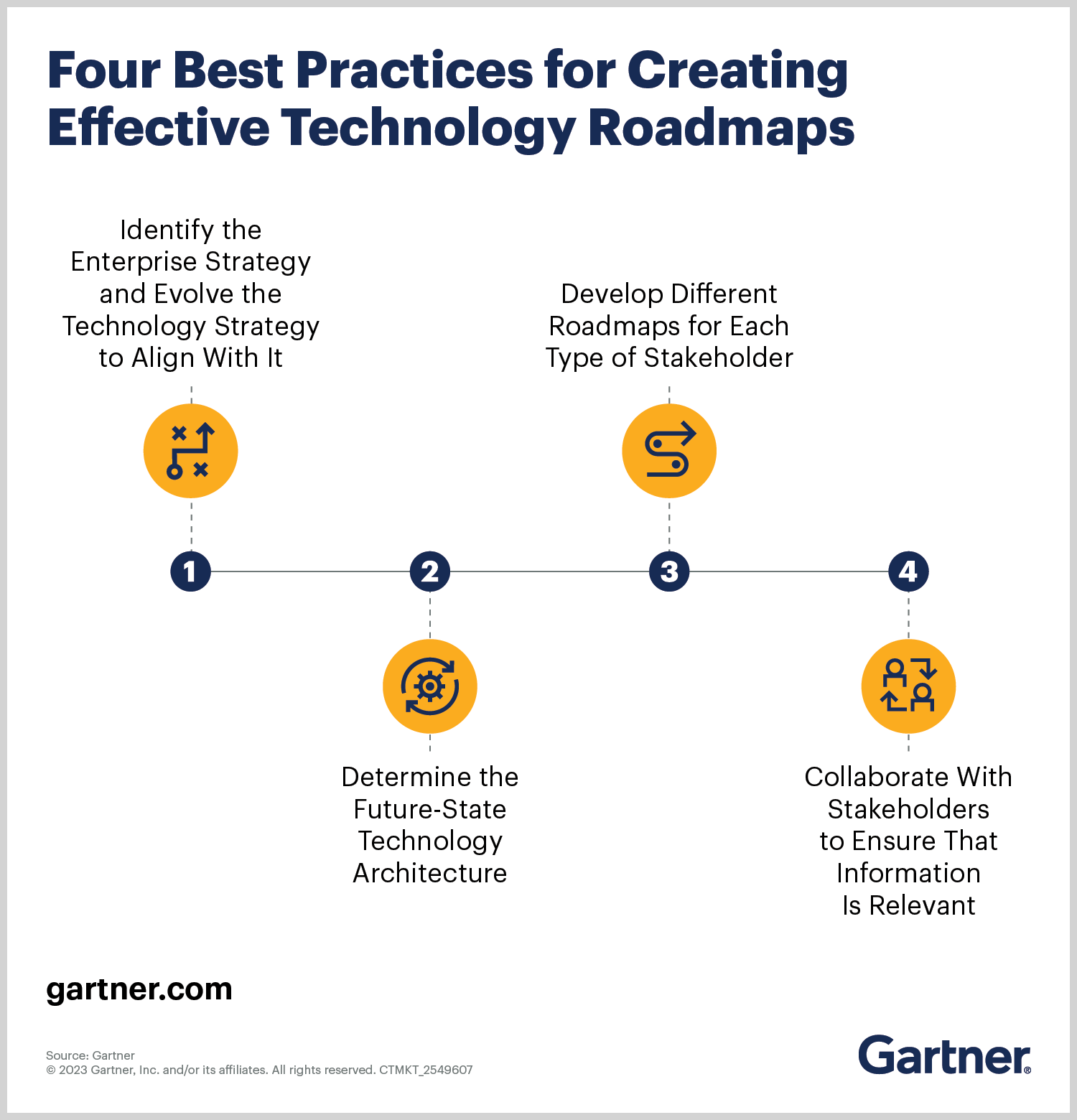How does your organization compare to your peers in terms of technology adoption? What technologies do you need to deploy in the next 12 to 18 months? Organizations without a clear technology roadmap often find themselves lost in a maze of inefficiencies, budget overruns, and missed opportunities. Let’s explore why technology roadmaps are crucial, signs that your roadmap needs optimization, and how you can update yours to have the most impact.
Why a Technology Roadmap is Important
Technology is no longer confined to the IT department—it’s a critical business enabler across all functions. Thus, IT should do more than “keep the lights on.” It should actively support business goals, enhance efficiency, and drive innovation. A roadmap that is carefully aligned with the business ensures that technology investments contribute directly to organizational success. Further to this point, technology shapes how we work and impacts customer experiences. A cohesive technology roadmap helps businesses remain agile, adapt to market trends, and stay ahead of the curve.
Implementing multiple IT initiatives requires a strategic, phased approach. A roadmap ensures that your organization follows a deliberate path. As the saying goes, “you have to walk before you can run.” By breaking down projects into manageable phases, you can address interdependencies between systems and processes. Following a strategic technology roadmap avoids disjointed results, duplicate effort and systems, silos, and potentially costly rework.
Roadmaps are also key to facilitate planning. When planning budgets, hiring key resources, training staff, or securing partnerships with technology vendors, a roadmap will lay the foundation for resource and financial planning.
Six Signs Your Technology Roadmap Needs Optimization
You likely have some form of roadmap in place. How can you tell if it is meeting your needs? Here are six signs that your IT roadmap may need attention:
- It doesn’t address business goals: If your roadmap focuses solely on technical features without addressing the “why,” it’s incomplete. In fact, Gartner predicts that chief technology officers who use business-outcome-focused technology roadmaps will see a 20% increase in employee and customer satisfaction scores due to better alignment of technology with business and customer needs. They also illustrate four best practices for creating and using tech roadmaps effectively to support business models and drive goals. After all the real value of roadmaps lies in tying technology to business goals. For example, you might be updating your CRM to enable sales to better contribute to revenue growth, or solutions like AI and automation may be intended to reduce overhead costs or improve customer retention. The technology items on your roadmap should clearly tie to business KPIs and strategic initiatives. Without this alignment, it can be difficult to build a business case and gain stakeholder buy-in.

- The roadmap doesn’t include user feedback: End users are also often a source of innovation as they may have unique perspectives based on their day-to-day tasks that IT departments and executives are not always privy to. Neglecting input from end-users can result in solutions that fail to address their needs and pain points, leading to low adoption rates and decreased return on investment. Regular feedback ensures that your roadmap remains user-centric and adaptable.
- It doesn’t address recent market trends: Technology evolves rapidly. Consider disruptors like AI and cloud computing. Even on a smaller scale, if you are one of thousands of organizations using Microsoft 365, new apps and features are released regularly. For example, Microsoft Viva was released in 2021, however Microsoft has quickly followed that up with a steady expansion of innovative solutions, including Microsoft Viva Engage, Viva Amplify, Viva Glint, Viva Pulse, Viva Goals, and more. Stay informed about upcoming technology shifts to ensure that your roadmap remains relevant, and your efforts make the most of evolving technology.
- The roadmap doesn’t show what success looks like: Clear, measurable goals and KPIs are essential for tracking progress and demonstrating the impact of IT initiatives on business performance. A measurable roadmap sets clear timelines and includes the impacts of planning initiatives. Avoid making your roadmap a wish list of projects that may be done some day or don’t contribute to the business.
- The roadmap isn’t adaptable: In a dynamic business environment, rigid roadmaps can quickly become obsolete. Certainly, the pandemic made this point clear to organizations who had to scramble to enable remote work and shift delivery models to suit a “new normal”. Flexibility is key to adapting to changing priorities and emerging technologies. Be prepared to adjust your roadmap based on market shifts and technology changes.
- It doesn’t address change management: Technology adoption is as much about people as it is about systems. A successful roadmap should incorporate strategies for managing organizational change and fostering user adoption. Include change management strategies to ensure successful implementation. This could include phased implementations by way of proof of concept or pilot projects, that reduce risk or identifying groups to champion updated processes and systems. Timelines should also accommodate time for any internal/external communication and training required to support adoption.
How to Update and Optimize Your Technology Roadmap
If you have found that your IT roadmap could use some updates, where do you start? Often an assessment of your current state is the best place to begin. While this may feel like going back to the drawing board, remember that incorporating business and end-user feedback is critical. Taking a step back to fully review your systems can help identify new gaps and opportunities for improvement.
It can be helpful to engage a third-party for this assessment. External expertise can bring objective insights, overcoming “blind spots” from those who work within your systems and processes every day.
Because “you don’t know what you don’t know,” an assessment from an outside technology expert can also bring in new ideas for innovation based on rapidly evolving technology capabilities and provide and broader perspectives across technologies where you may not have expertise internally.
This does require some upfront investment, but remember, a well-crafted technology roadmap isn’t just a document—it’s your organization’s compass, guiding you toward success in the digital journey. Laying this foundation is key to enabling your business through technology.
If you’d like assistance assessing your technology environment and optimizing your IT roadmap, Elantis’ team of experts is here to help. Reach out to Elantis today to discuss how we can help you build a strategic plan towards success.

























